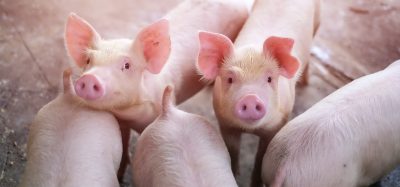New study pinpoints ways to improve quality of food & nutrition research
- Like
- Digg
- Del
- Tumblr
- VKontakte
- Buffer
- Love This
- Odnoklassniki
- Meneame
- Blogger
- Amazon
- Yahoo Mail
- Gmail
- AOL
- Newsvine
- HackerNews
- Evernote
- MySpace
- Mail.ru
- Viadeo
- Line
- Comments
- Yummly
- SMS
- Viber
- Telegram
- Subscribe
- Skype
- Facebook Messenger
- Kakao
- LiveJournal
- Yammer
- Edgar
- Fintel
- Mix
- Instapaper
- Copy Link
Posted: 6 July 2018 | George Smith (New Food) | No comments yet
The author of the research called for academics and scientists commit to 100 per cent disclosure of study funding source.


GOOD NEWS: This is the first scientific publication to statistically demonstrate that the guidelines for published research that have been in place since 2000 have been successful
Fresh analysis has found a marked improvement in the quality of food and nutrition research since 2000 – when the research community adopted detailed guidelines concerning the publication of their work.
In a study published today in PLOS ONE, experts analysed reams of past food and nutrition research to help identify and spur action in areas where meaningful improvements can be made in the design and execution of future food and nutrition studies.
This is one of the first studies to use “Risk of Bias (ROB) domains,” as defined by Cochrane, in this way. Researchers typically use ROB domains to evaluate the relative strengths of individual studies when conducting systematic reviews.
“The research community can put insights from this study into action to increase public trust in food and nutrition research,” said lead author Dr Esther Myers, EF Myers Consulting, Inc., an author, lecturer, educator and researcher in dietetics and evidence analysis.
“Based on our findings, I’d propose these strategies to improve future research: 1) enhance researcher training; 2) publish nutrition specific extension of reporting guidelines to address potential sources of bias; 3) continuously monitor for improvement; and 4) for enhanced transparency, commit to 100 per cent disclosure of study funding source.”
The research community has done particularly well, to date, in minimising certain ROB domains:
- Attrition bias, or missing data, such as when participants drop out of a study
- Reporting bias, or ensuring study conclusions represent the data
Researchers have not been as successful in minimising these ROB domains:
- Selection bias, or how participants are chosen and assigned to groups
- Performance bias, or how study interventions are defined, measured and managed
- Detection bias, or how well researchers measure outcomes and account for other factors that might influence the results
Publication year and study design were more consistent predictors of quality than study funding source. Industry-funded studies were not generally found to be lower in quality.
Studies with “combined” funding sources – typically the work of public-private research partnerships – were higher in quality, by and large, than studies with single-source funding. It is widely recognised that there is a benefit to collaboration as experts bring different perspectives to the table.
Study findings reflect a statistical review of more than 5,600 published studies on a range of topics – clinical nutrition, food safety, dietary patterns and dietary supplements. Academy of Nutrition & Dietetics, USDA, Rutgers University and Tufts University researchers collaborated on the research. It was funded by the ILSI North America Assembly on Scientific Integrity.
This is the first scientific publication to statistically demonstrate that the guidelines for published research that have been in place since 2000 have been successful. Efforts to improve the quality of food and nutrition research are ongoing. ILSI North America has been working for the past 10 years alongside federal agencies and scientific professional societies to support continual improvement in scientific integrity








